
Walking into Austin Eddy’s studio, you get the impression that he is constantly producing. There are stacks and stacks of drawings, piles of in progress and completed paintings on canvas and sculptures lying neatly in piles in all areas of his small studio space. Even though his studio is a relatively new one since his move from Atlanta, it is evident that there was no time wasted in making work and there is a general sense of energy and movement in the studio.
Austin Eddy’s work is composed of different assemblages from old paintings and drawings that he reconfigures into a new piece. The way in which he works transcends beyond just painting into drawing and sculpture. The same sensibility in how he approaches his bleached and adhered scraps of paper and canvas paintings is reflected in 3D through his metal and ceramic sculpture pieces.
During our studio visit with Austin, we got to talk to him about his day to day and how his work in different mediums inform each other.

F: Can you start with describing your process?
AE: I ride the train a fair bit, and on the train if its not the L first thing in the morning I like to get a seat. I draw a lot on the train and fill up note books with lots of thumbnail sketches of shapes and figures and ideas for paintings and sculptures. Eventually I go to the studio and bring those note books with me, somedays I make sculptures and refer to the shapes in the books. Other days I make lots of drawings using scraps from the paintings or just drawing or taking the sketches and using those as the drawings. gluing them down, finding lots of ones that are similar and combining them. Most of the time I make paintings, sometimes I look back at the sketches and the other drawings and use those and starting points for the paintings and other times i just start with no end goal. I can’t really tell which I like better, since somedays it’s hard to get started with out the sketches and drawings other days they feel too much like a crutch. Once the ball is rolling regardless of the medium its all very intuitive.
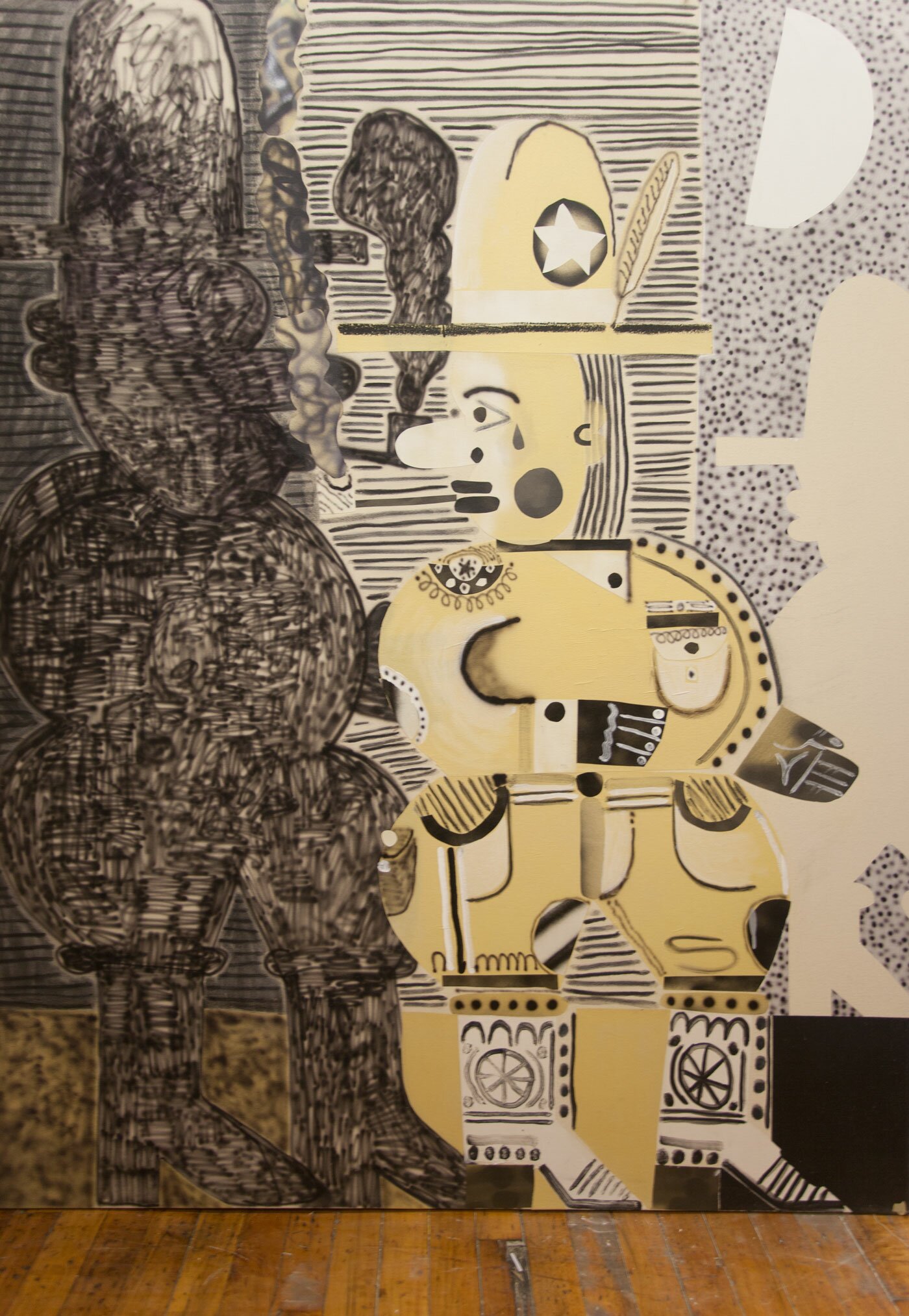
F: You work a lot on raw canvas and using different materials to define color and texture through additive and subtractive processes. Can you talk about that?
AE: I do work on raw canvas. It’s very unforgiving, there is often no going back. I like that about it, it creates an environment for creative problem solving.
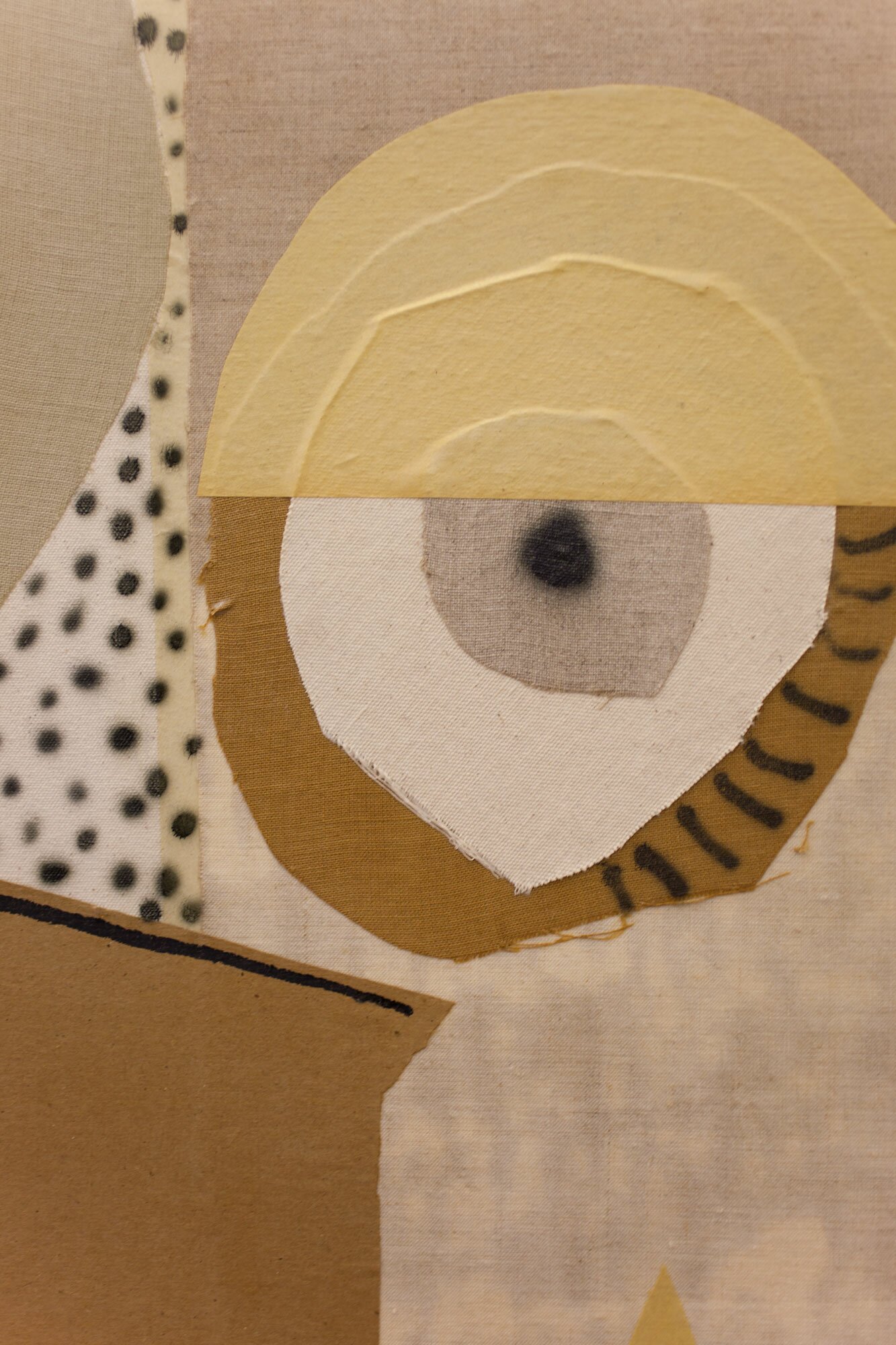
I also do use a lot of materials to provide colors and textures. I let things be what they are and am not trying to hide the materials, but make them work together. Recently I started working with bleach which is one of the few ways I have figured out how to start and work with reductive surfaces since the process is so additive.
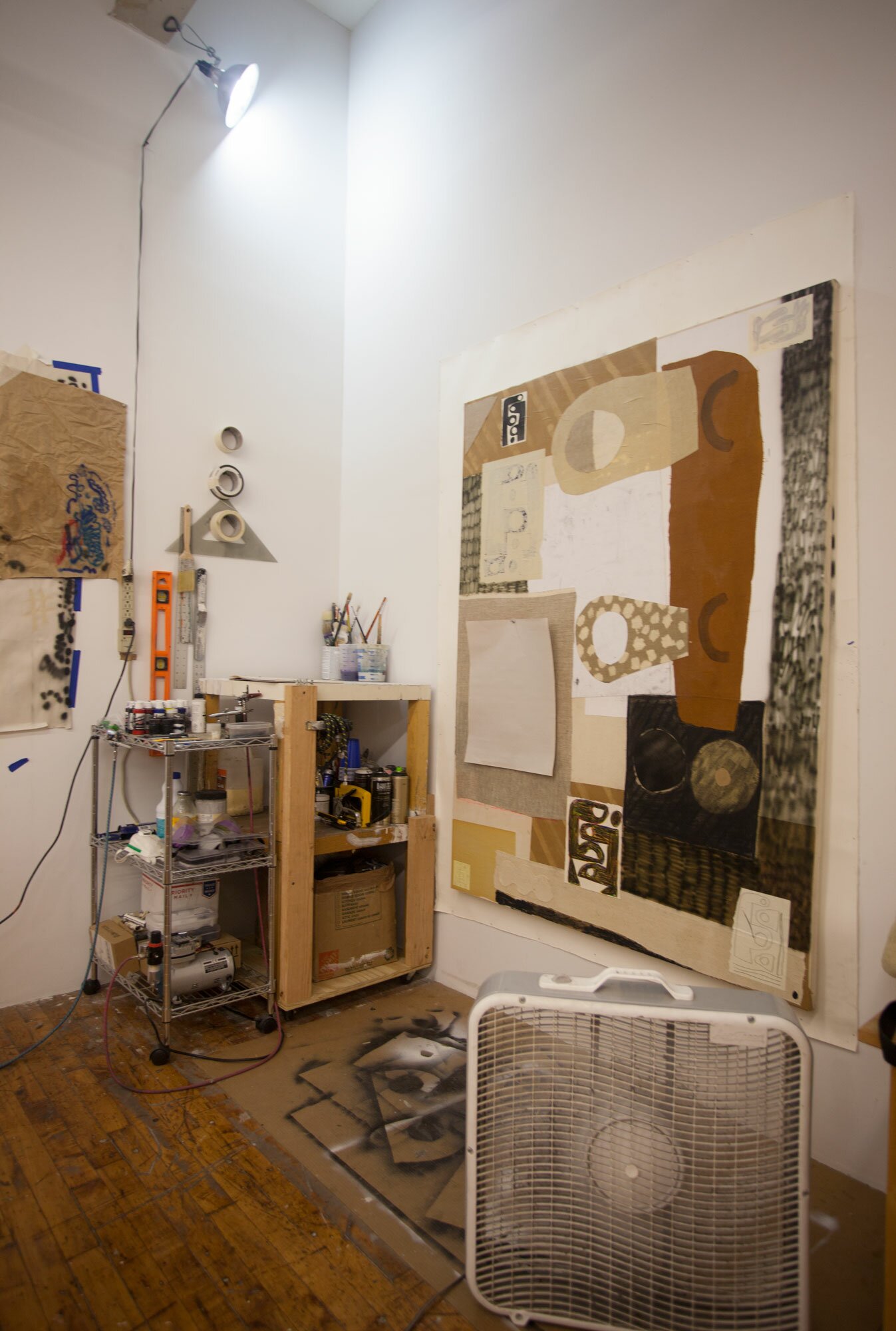
F: We’ve noticed that your work is mostly monochromatic but there are some pieces that have specific uses of color. Do you lean on the materials in your painting in terms of color direction?
AE: Often the colors are determined by the materials. Pinks from pencil erasers, yellows from wood glue or the reaction of gel medium and news print a whole range of colors from various linens and papers and how they change with the gel medium or bleach, whites from bleach, blacks from charcoal, grays from charcoal dust residue in the gel medium. I will sometimes use white paint, and I often mix blacks to be sprayed.
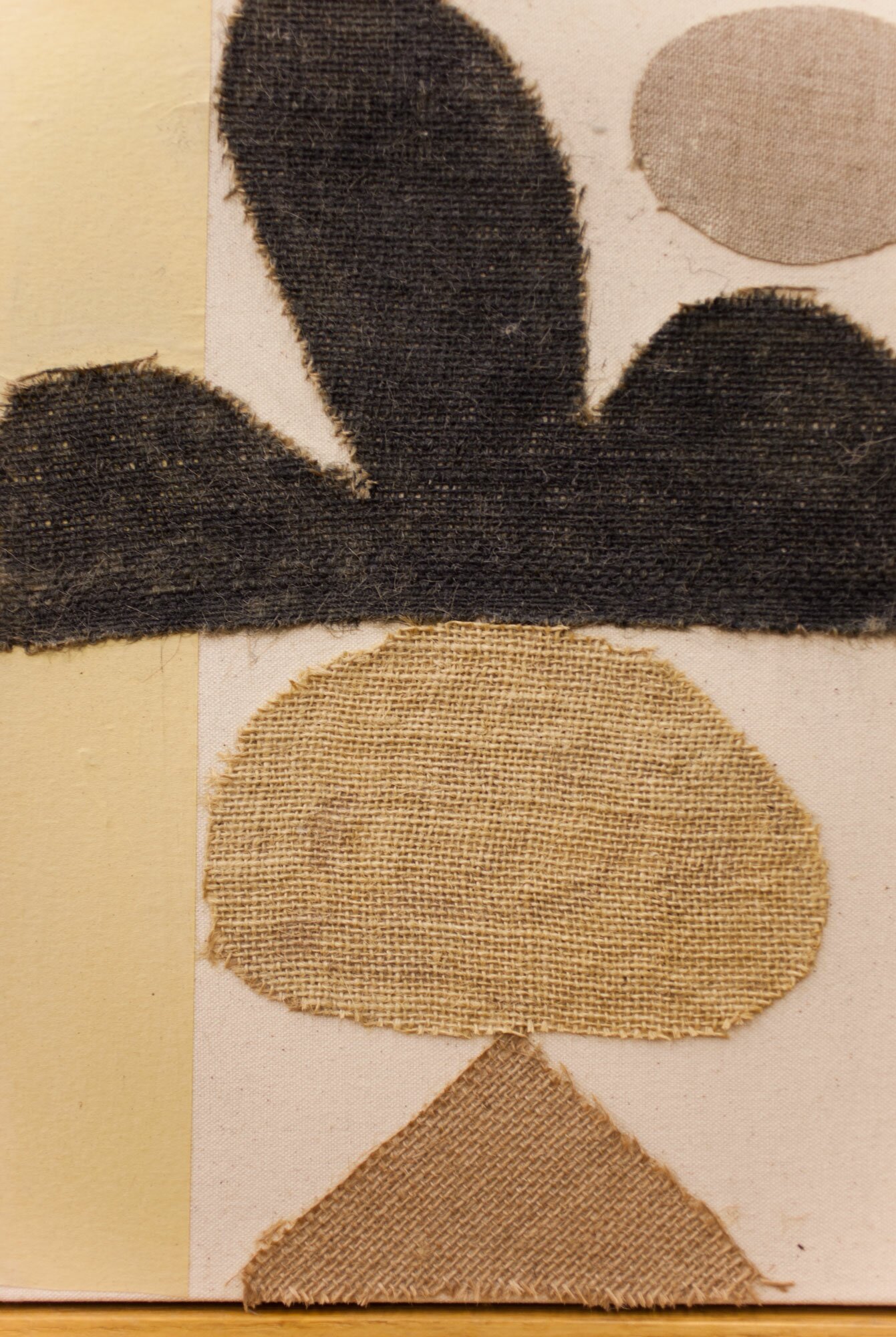
F: Does the different processes affect the color such as the process of gluing paper to the surface? Over time do you anticipate this and repeat certain found processes?
AE: Yes, most of the time the process affect the coloration of things. Before when I was making the work a lot of the yellowing happened accidentally, but now I am consciously looking for those mistakes to reference color and time.

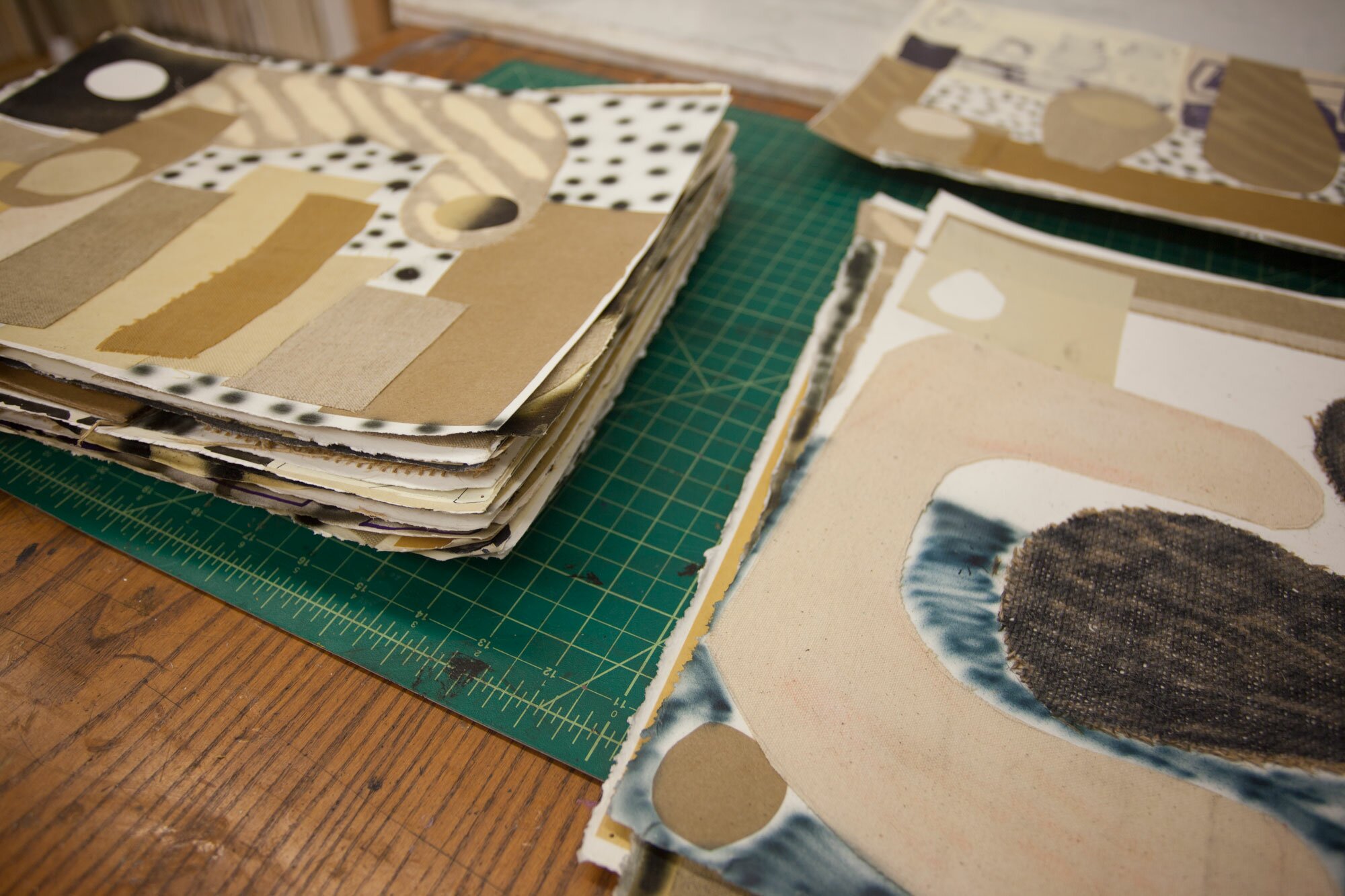
F: There are several pieces with simplified bird shapes, abstracted plants, and figurative shapes. How do you land on the imagery you use in your work?
AE: The simplified shapes are usually drawn from my life. Often autobiographical or referential to a personal felling or situation. Sometimes though I like a shape and I work through it over and over again, looking for some sort of understanding.
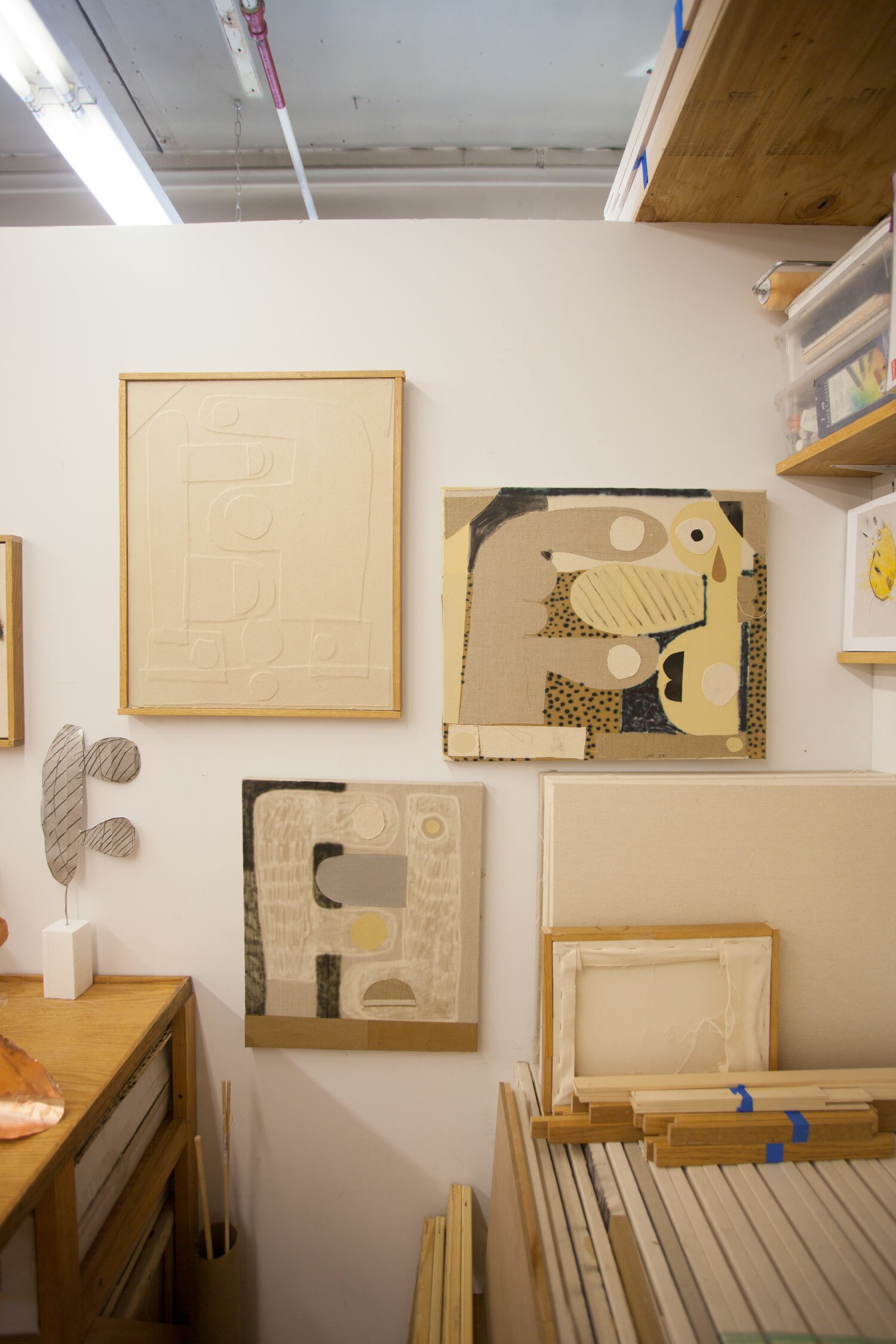
F: What role does figuration play in your work? Is it a launching point or does it evolve into these different subjects?
AE: I have always wanted to be a wild abstract painter like Motherwell, or DeKooning or something like that, but I could never do it. I have a hard time letting go of something solid right now. I am in this weird limbo between wanting to represent a figure while also trying to let go and push the figure into obscurity. But at the heart of it all, the figure is ever present and always the armature for how the painting is constructed. The figure is always the launching point to some degree, but there is always a decision being made about wether or not to tell a story or just make the shape in the most interesting way possible.
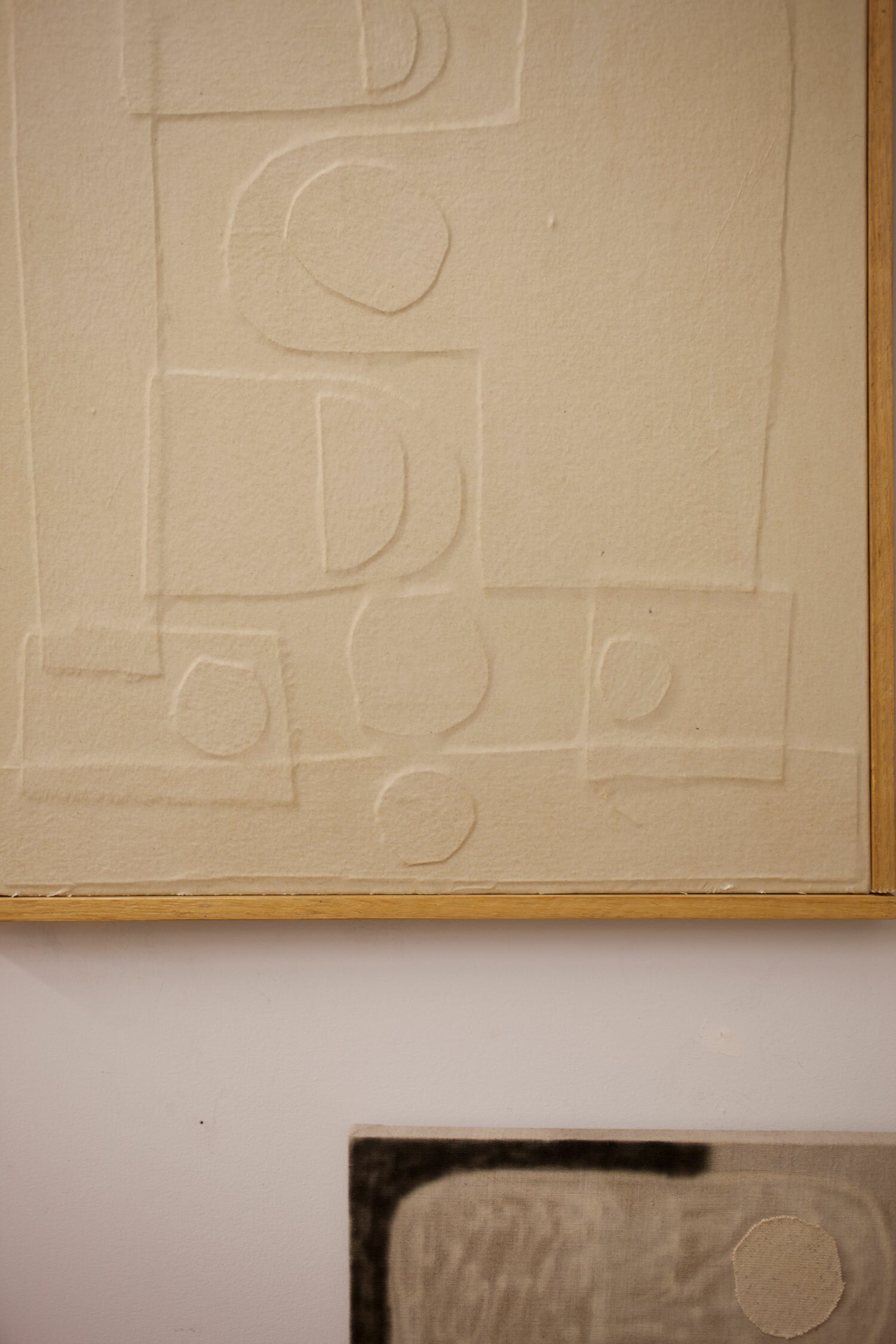
F: Before you had a live-work space but now you have a strictly work studio. How has changing studios changed the way you work?
AE: I had a live work situation for a few months when I was living in Atlanta sharing the studio / apartment with my Girlfriend Shara Hughes. Before then, and during, I had a studio in the Brooklyn Navy Yard. So for those few months when I was not living in BK and walking for an hour each way the live / work was kinda nice. It was also a little bit of a drag. Living in the studio makes it harder to turn off. I felt at times when I was living where I worked the work was never done (it never is, but..), like I couldn’t wash my hands and walk away and try to forget about it. On the other hand no commute and constant immersion made it so starting work was less of a process, no transition from studio time to home time to commute time or anything like that. But it never really changed how I worked, It just affected the amount of time I did work.

F: What is a typical studio day like?
AE: A Typical studio day… usually involves waking up getting it together enough to go over there. It’s close now, so its easier, but once i get there i putz around for awhile, sweeping, wiping things down, un-stretching the paintings i made the day before, re-stretching blank ones, once things are in order and clean again i like to try and go for a run, I’m not in the best shape, but i do it and when i get back i drink some water and then i jump into it. What i work on sort of is just a feeling, a lot of gut decisions are made and i work. I spend the whole time there, i don’t leave once i go in, and i don’t have any chairs so i don’t sit down. continually moving helps me keep my brain from slowing down i guess. So I work usually till i burn out and cant make any more good decisions, and then i sweep and wipe things down and throw away dirt rags and paper towels scraps from the paintings etc. take the trash out feeling frustrated and knowing i am going to go back tomorrow and fight the good fight another day.
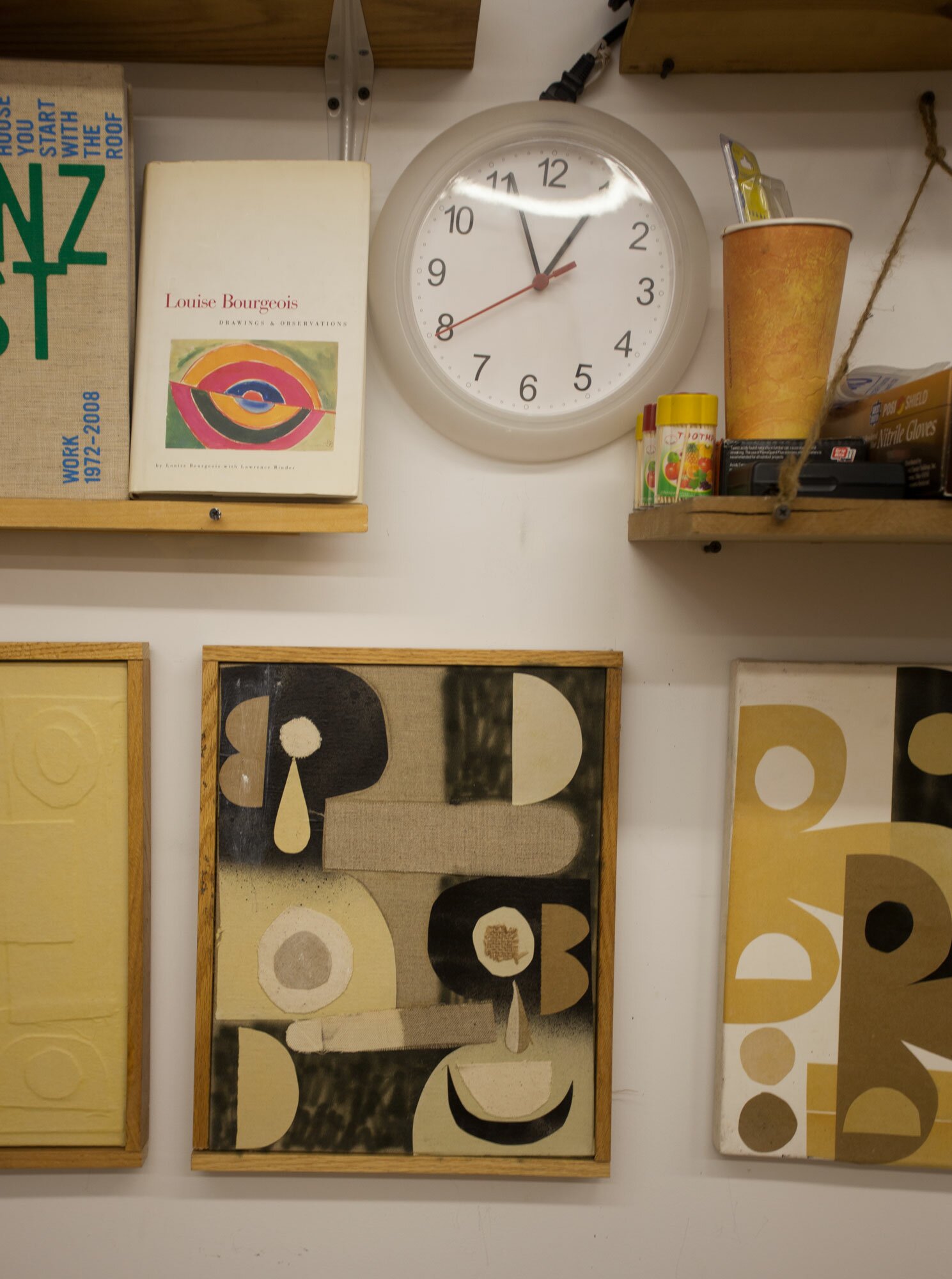

F: How long does it take to produce a painting?
AE: It really depends on the day or the week or the month. When I am going to work a lot at my day job, I get less done. The paintings take longer to make with less time spent working on them. But usually I try and spend 8-10 hours working in the studio. On those days sometimes i can manage to finish a painting in a sitting. But most of the time the works takes a few days to feel resolved. I feel like I have slowed down and am taking more time with the paintings. Now that there fewer elements in them, I spend a lot more time considering how things lie.

F: In terms of your drawings and sculptures, do you see them as separate practices or do they all influence each other?
AE: They are all one practice i think, they are all made with a similar sensibility. I think a lot of it is trial and error especially when it comes to the sculptures, I am not a sculptor, I am a painter making sculptures, so there is way less pressure and that feels freeing to me. I try and bring that mentality to the other works, always try to use new tools materials marks etc. to make the paintings and drawings. I’d like to think I take that from the sculptures. As far as the paintings go, I am working on making paintings with out paint so there is a far closer relationship with the drawing. Mostly similar in materials and process used to make them, but not so much in scale or anything like that. But that could be subject to change. It all kind of is right now, really feels like a period of fluctuation.

You can see more of Austin’s work at




